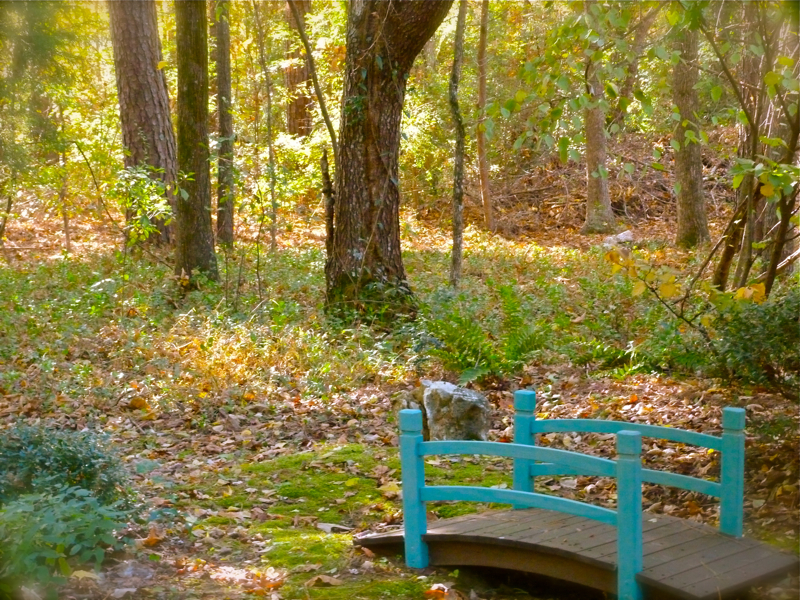The Secret of My Woodland Garden
 Sunday, November 20, 2011 at 5:00AM
Sunday, November 20, 2011 at 5:00AM Leaves swirl in the breezes of November, glory fading in the last weeks of autumn. Thick piles of them blanket the woodlands where I have raked them from the moss paths onto adjacent natural areas. It was not hard work. Wet leaves are easier to rake than crumbly, dry ones, and rain for the previous two days made them easy raking. Golden sunshine, along with invigorating but not too cool temperatures gave my spirit a lift as I pulled at the sodden leaves. A lightweight, very wide rake helped, too.
I never tire of examining foliage in all its manifestations and stages. I love the shapes, the textures, the shadings and the way light plays against the veins. Below is an assortment of fall leaves:
November brought wonderful colors to the woodland garden. This photo is from the road, at the edge of the woodlands:
There is a secret ingredient to my colorful woodlands. I think it is what makes the woodland garden special. Can you guess what it is? I will tell you at the end of this post!
After raking leaves I enjoyed a stroll through the woodland garden. The little bridge is one of my favorite features: I take too many photos of it! Here are a few more, taken over a couple of weeks:
I take too many photos of it! Here are a few more, taken over a couple of weeks:

 Acer palmatum 'Orido Nishiki' turned from green to brilliant red almost overnight.
Acer palmatum 'Orido Nishiki' turned from green to brilliant red almost overnight.
Weeping Deodar cedar 'Feelin' Blue' is a beautiful accent in the woodland garden year round, but its blue color is especially intense this time of year:
Here are some more images of the November woodland garden: The old birdhouse hanging in the trident maple tree is due for a refurbishment!
The old birdhouse hanging in the trident maple tree is due for a refurbishment!
So, what is the secret ingredient of my woodland garden?
It is the color blue! Look at all the woodland scenes above and imagine them without the blues of the deodar cedar and other plants with a blue tint to their foliage. Imagine the turquoise blue bridge gone. No faded blue of the old concrete bench. No blue-green birdhouse. Throughout the year the blues offer counterpoint and contrast to other colors in the woodland. One may not think of blue as a fall color, but I can't imagine the reds and golds without it!
 Permalink
Permalink